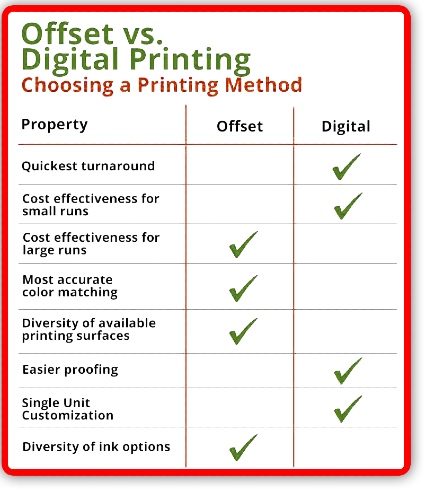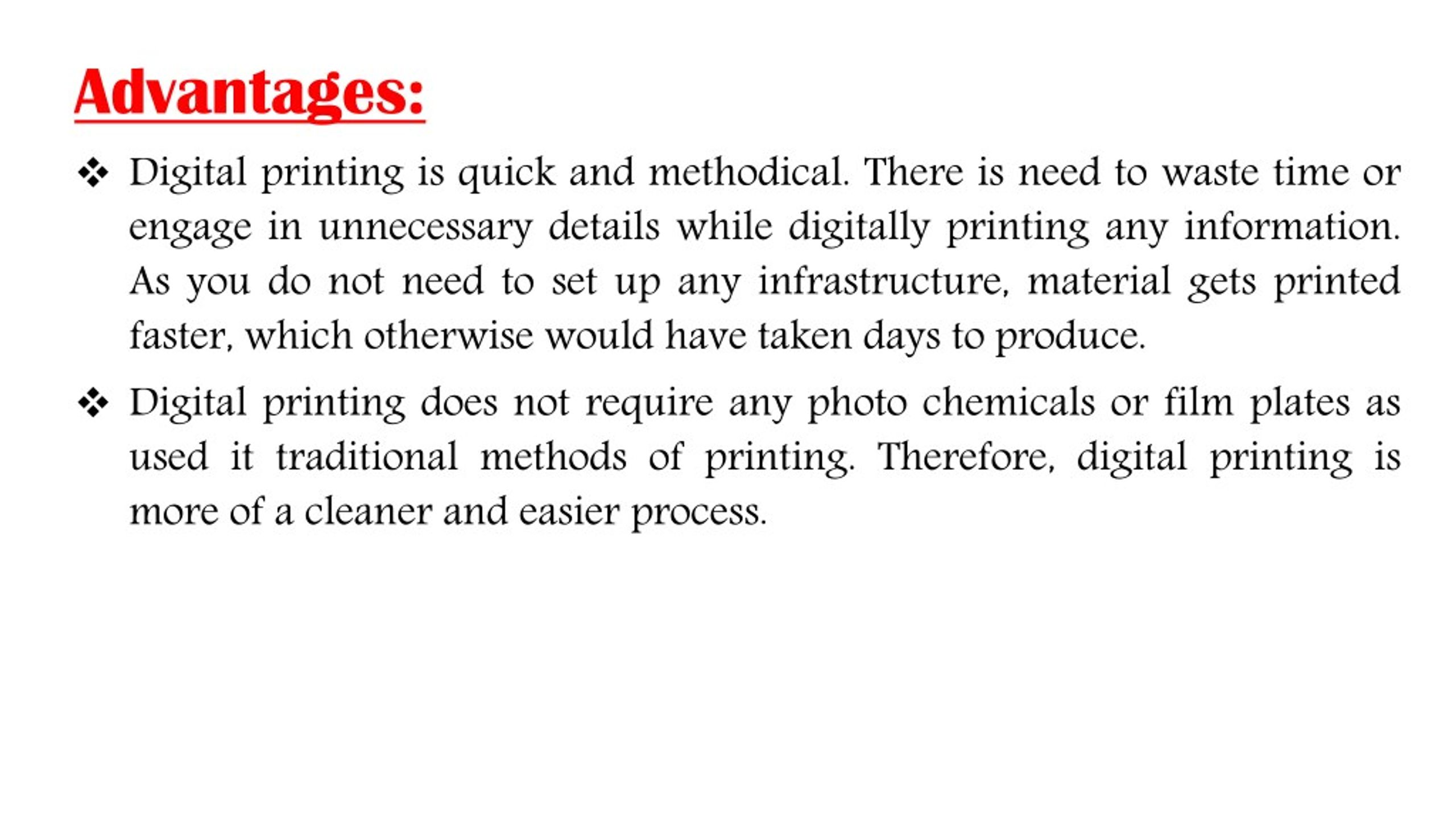The 2-Minute Rule for Digital Printing
The 2-Minute Rule for Digital Printing
Blog Article
Digital Printing Can Be Fun For Everyone
Table of ContentsOur Digital Printing PDFsAn Unbiased View of Digital PrintingDigital Printing Can Be Fun For AnyoneEverything about Digital PrintingSome Known Facts About Digital Printing.Some Known Facts About Digital Printing.
Variable information printing, such as straight mail with individualized codes and addresses, is ideally matched for digital printing. Digital quick printing just needs 4 steps of style, testimonial, printing and binding to get every little thing done. Digital quick printing has an unmatched benefit: print on need.According to PMMI, electronic printing permits brand names and suppliers to react swiftly to customer demands while boosting the supply chain, decreasing warehousing price and waste, and appreciating faster time to market. That all noises fantastic, but exactly how does this modern technology do all that? The major differentiator of these technologies is that there are no set up costs and no plates with electronic printing.
Top Guidelines Of Digital Printing
This results in quicker turn-around time and decreases price when making use of electronic printing.
Digital printing is highly adaptable, so it's easy to make adjustments to the package layout quickly. It all goes back to the plates.
Extra supply can suggest more waste in the future. With standard printing approaches, short-run printing is simply not possible. Due to the fact that an excellent design can make or break your item, electronic printing consistently produces top quality, clear and vibrant graphics each time. Digital printing on versatile bags adds the bright, lively, and specific graphics that virtually bid consumers to connect and touch them.
Digital printing is the process of printing digital-based images directly onto a variety of media substratums. There is no demand for a printing plate, unlike with countered printing. Digital data such as PDFs or desktop publishing files can be sent straight to the digital printing press to print theoretically, image paper, canvas, textile, synthetics, cardstock and various other substratums.
The Basic Principles Of Digital Printing
According to PMMI, electronic printing allows brand names and suppliers to respond rapidly to consumer demands while improving the supply chain, minimizing warehousing cost and waste, and taking pleasure in faster time to market. That all sounds helpful hints excellent, but how does this modern technology do all that? The significant differentiator of these innovations is that there are no set up costs and no plates with electronic printing.
According to Wikipedia, the greatest distinction between electronic printing and conventional techniques such as lithography, flexography, gravure, or letterpress is that there is no need to change printing plates in digital printing, whereas in these analog printing approaches the plates are repeatedly replaced. This causes quicker turnaround time and lowers expense when making use of electronic printing.

Digital Printing Can Be Fun For Anyone
With standard printing approaches, short-run printing is simply not feasible. Since a wonderful layout can click this make or break your item, electronic printing constantly produces high-quality, clear and colorful graphics each time.

According to PMMI, digital printing enables brands and producers to respond swiftly to client demands while improving the supply chain, decreasing warehousing cost and waste, and appreciating faster time to market. That all noises wonderful, yet how does this technology do all that? The significant differentiator of these modern technologies is that there are no set up charges and no plates with digital printing.
The 7-Minute Rule for Digital Printing
This results in quicker turnaround time and reduces cost when using digital printing.
Digital printing is highly flexible, so it's very easy to make changes to the plan layout rapidly. It all goes back to the plates.

Digital Printing for Dummies
Digital printing is the process of printing digital-based photos straight onto a range of media substratums. There is no need for a printing plate, unlike with offset printing. Digital files such as PDFs or desktop publishing files can be sent out straight to the electronic printing press to publish on paper, picture paper, canvas, fabric, synthetics, cardstock and other substratums.
Report this page